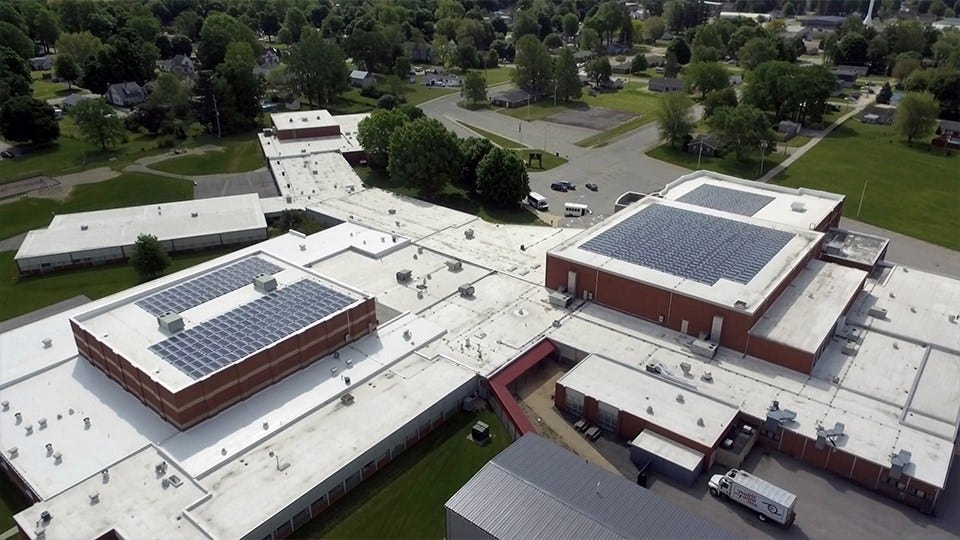Argos Schools Aims to Turn Solar Project Into Teaching Tool
 (photo courtesy of Argos Community Schools)
(photo courtesy of Argos Community Schools)
Subscriber Benefit
As a subscriber you can listen to articles at work, in the car, or while you work out. Subscribe NowA school district in Marshall County has completed a renewable energy project it says will save millions of dollars. Argos Community Schools partnered with Indianapolis-based Johnson Melloh Solutions to install a 225-kilowatt rooftop solar array with more than 630 panels, as well as four power inverters and a 65-kW natural gas micro-turbine. Superintendent Ned Speicher says the district will be able to recoup more than $3 million over the next 25 years as a result of the project.
The district invested about $2.8 million to the project, which also required roof repairs before the solar array was installed. Speicher says the project was born out of a need to be more efficient and better stewards of the local taxpayers’ money.
“We started looking at our energy consumption, which is one of our largest fixed costs and how do we get more of our fixed costs into instruction?” said Speicher. “Then we started studying about a guaranteed energy savings grant from the state of Indiana, (which) has put out a program for public schools to (receive) guaranteed energy savings.”
Speicher says in addition to the financial savings, the project will also create teachable moments for K-12 students.
“We also realize that kids are going to be working in green energy fields and we look at our high school kids and we’re instructing them with vocational courses and training them. Tying it into the instruction piece we saw as huge as we’re raising a future generation that will be working in these industries.”
He says the solar array will become a part of the district’s entire curriculum, which will eventually include green energy vocational courses at Argos Jr/Sr High School.
“Kids will actually study this type of solar energy and wind energy and then go out and shadow and work in companies in our area that are doing this type of stuff.”
The district has installed monitors inside the schools that show students how much energy it is generating at any given time, as well as how much excess energy is being sold back to the grid.
“On sunny days, we produce a lot more than we consume and we’re selling that back to the electric companies,” said Speicher. “And the kids watch that and they talk about it. This summer alone, we generated enough electric to pay for over 10,000 gallons of gasoline and kids talk about that.”
Speicher says he hopes the project will serve as a model for other small school districts, many of which are struggling financially. He says he has been contacted by other districts with questions on how Argos Schools accomplished its goal.
“We see this as a starting point, not an end point, as we’re starting to think in different ways instead of just plugging into the grid and paying the bill like we always paid it.”
Speicher says the project was born out of a need to be more efficient and better stewards of the local taxpayers’ money.
Speicher says in addition to the financial savings, the project will also create teachable moments for K-12 students.
